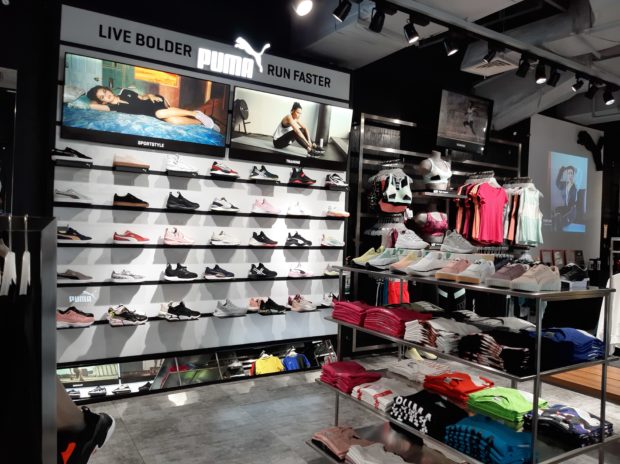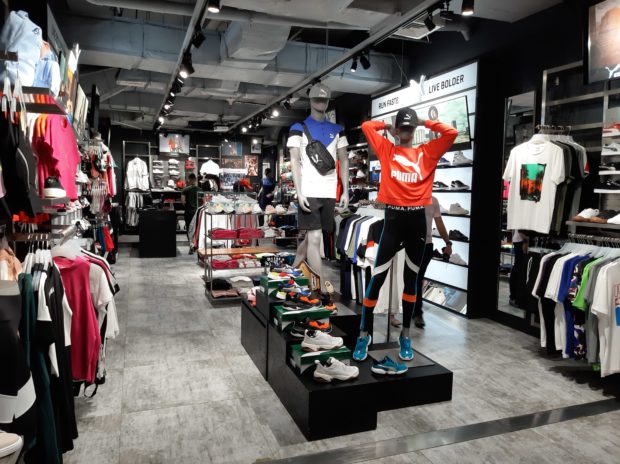The sneaker fever in the Philippines has shown no sign of abating as more and more Filipinos have come out to express their love for rubber shoes in all shapes, designs and sizes from basic “shoefies” and OOTD’s on social media to out-and-out discourses and reviews caught on video, of course in YouTube and on Facebook.
One brand, PUMA, with a fresh new take on classic sneakers, reinvention of trendy styles embraced by the market, collaborations with power-athletes and personalities, and of course radical innovations in style and performance footwear; has slowly experienced a resurgence the past few months in a world dominated by the big two of “sneakerdom”.

But where did the world’s top sports and lifestyle brand come from? Here are ten facts that the new generation of sneakerheads may have missed:
- The brothers Rudolf and Adolf Dassler founded the company “Gebrüder Dassler Schuhfabrik” (Dassler Brothers Shoe Factory) in their hometown Herzogenaurach, Germany in 1924.
- Within the first few years, both gained acclaim. A majority of German athletes wore Dassler spikes at the Olympic Summer Games in Amsterdam, 1928. In 1936, Jesse Owens won four gold medals at the Olympic Games in Berlin, all while sporting Dassler spikes. More medals and more iconic athletes soon followed.
- 24 years after founding their company, in 1948, the Dassler brothers fell out and went separate ways. Rudolf Dassler moved into another building, which belonged to the family. Together with just 14 employees, he transformed this storage facility into a factory and founded his own company: the “Sportschuhfabrik Rudolf Dassler (RUDA)”; while Adolf Dassler started Adidas only in 1949.
- October 1, 1948 “PUMA” of Rudolf Dassler was registered at the German Patent and Trademark Office.
- PUMA enjoyed a string of record-breaking and triumphant moments in the world sports stage. In the realm of football, Brazil’s then 18-year old Pele served as the poster boy during the World Cup held in Chilé (arguably the greatest footballer of all time); and in Olympic running, with Armin Hary, then the fastest man in the world, PUMA continued its track and field success story.
- In 1968, PUMA athlete Tommie Smith of the United States won gold in the 200m and he and his teammate John Carlos, raised their right fists wearing black gloves and their Puma Suedes on the podium, protesting discrimination of African Americans and other minorities in the USA, apartheid, and racism known as the iconic “Black Power Salute”. This event cemented the PUMA brand as not only a brand all about sports and performance, but a brand that represented a cause greater than itself.
- In the ’70s PUMA entered the realm of basketball with Walt “Clyde” Frazier, a stylish man who made a name for himself on the court by stealing the ball from his opponents. So, when he asked for a custom-made pair of Suedes, PUMA entered the realm of performance and fashion, and the PUMA Clyde was born.
- In the ’80s and in the 90’s, PUMA expanded its presence and support for a variety of sports categories and personalities that included tennis with Serena Williams. And in the latter part of the 90’s, PUMA strengthened its “athletic fashion” lines with a first ever collaboration between a sports brand and a fashion designer Jil Sander. Inspired by the success, PUMA launched a number of collections that fused sports and lifestyle, with the likes of Madonna taking notice and wearing them on her world tour.
Also in the early ’80s, the Suede was the pioneer footwear worn by the breakdance enthusiasts in the US by Rocksteady Crew and New York City Breakers.
- With the arrival of the new millennium, PUMA went faster, further with the entry to a variety of sports like sailing and motorsports with Formula 1. However, the brand never forgot its running heritage when PUMA athlete Usain Bolt – the World’s Fastest Man – set a 100m world record at 9.69 seconds and sprinted 200m in a world record time of 19.30 seconds, beating Michael Johnson’s 1996 record by two-hundredths of a second.
- Fast forward to mid 2000, the PUMA brand has globally embraced more than just the race and the thrill of the competition by joining forces with lifestyle icons like music superstars Rihanna who also served as Creative Director, Selena Gomez, and Kylie Jenner. PUMA signed with international super-model Adriana Lima for a long-term partnership as the brand’s new women’s training ambassador; and Cara Delevingne, actress and supermodel.

And just recently, after a two-decade absence in the world of basketball, PUMA has added the basketball category to its business portfolio again with the appointment of entertainment and cultural icon Shawn Carter, better known as Jay-Z, as Creative Director for basketball.
PUMA sees basketball through a cultural lens. Fashion, art, and music elevate basketball and are as important for the sport as the games themselves.
With the evolution of the brand, PUMA aims to not just reinvent itself but continue its legacy.
The brand will never turn away from its history but build on it for the years to come, embracing everyone, athlete or otherwise in the understanding that each and every one of us run our own race, struggle daily in our own competition, and strive to move forever faster in our never-ending human’s race for recognition, pride, and success.
Learn more about PUMA. Visit www.facebook.com/pumaph and their Instagram @pumaph or visit their stores at PUMA Bonifacio High Street, PUMA Glorietta 4, PUMA Greenbelt 5, PUMA Trinoma, PUMA Newport Mall, PUMA Festival Supermall, PUMA Ayala Center Cebu and PUMA Centrio.
ADVT

